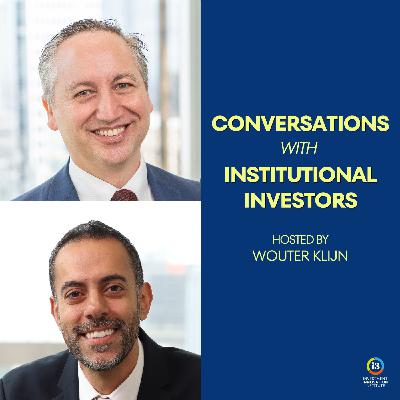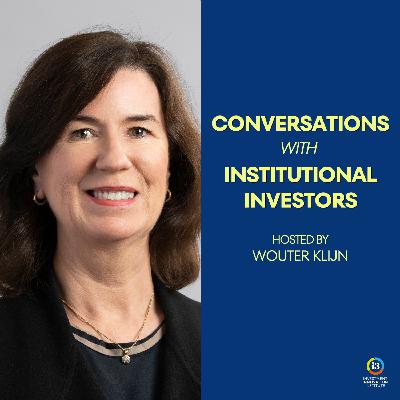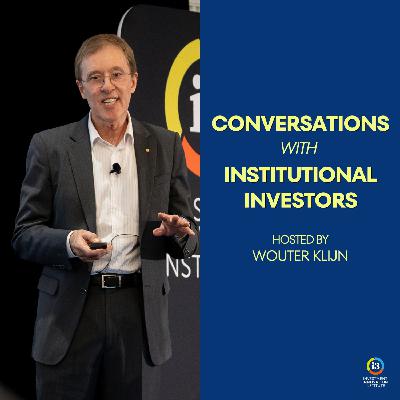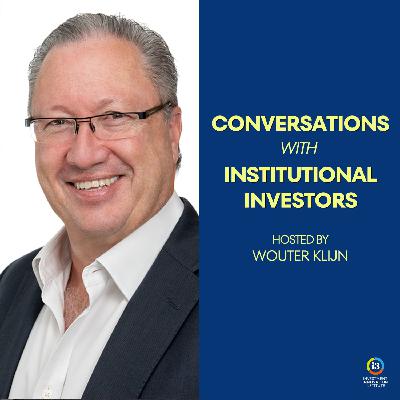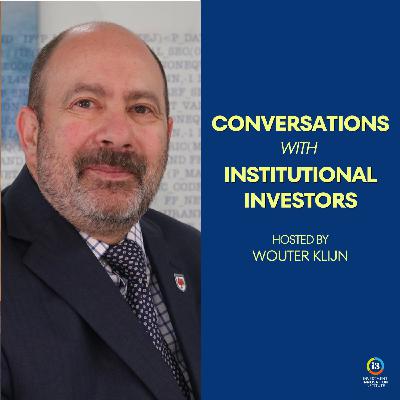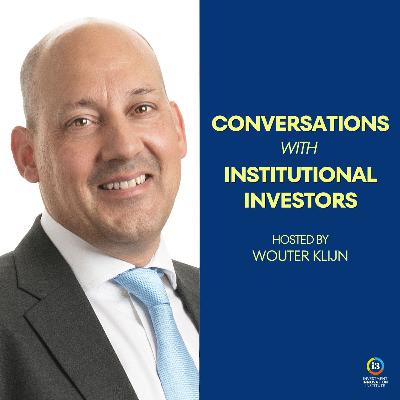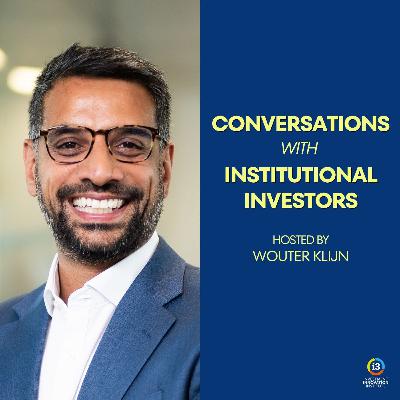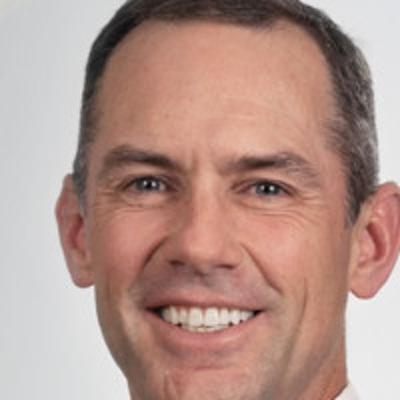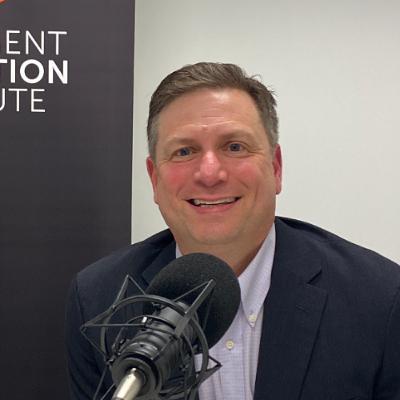122: Fidelity's Maroun Younes and James Abela – SMIDs in a World of Large Cap Dominance, Are Things About to Change?
Description
In Episode 122 of the [i3] Podcast, Conversations with Institutional Investors, we speak with Maroun Younes and James Abela, co-portfolio managers of the Fidelity Global Future Leaders strategy, about the attractiveness of small and mid-cap investments, a $12 trillion market with significant growth potential.
They acknowledge the recent underperformance of small caps due to market concentration in large caps, particularly in US tech, but point out that people are starting to wake up to the risks associated with those concentrations. Are we in an AI bubble, driven by these large caps?
The conversation starts at a high level, discussing the importance of quality, value, transition, and momentum, and then we do a deep dive into specific investments, such as Arista and FICO-score provider Fair Isaac Corporation.
We also come back to AI and see how it can be used by asset managers.
________
Follow the Investment Innovation Institute [i3] on Linkedin
Subscribe to our Newsletter
Explore our library of insights from leading institutional investors at [i3] Insights
________
Disclaimer: The content in this podcast is for institutional and wholesale investors and is not for distribution to retail investors. This podcast has been prepared without taking into account any person's objectives, financial situation or needs. It is provided for general information purposes only and is not intended to constitute advice of any kind. References to specific stocks is for illustrative purposes and is not a recommendation to buy, sell or hold those stocks. You should consider the relevant PDS and TMD for any Fidelity Australia product mentioned before making any investment decisions, available at www.fidelity.com.au.
Podcast Overview
04:00 Large caps outperforming small caps in the US is unusual; historically small caps have outperformed over time. But people are waking up to the risk of concentration, both at a stock level and sector level
07:00 We are not too concerned about US exceptionalism, because we don't see a huge break point going forward
07:30 It is always hard to tell whether we are in a bubble, but there are early signs of a formation (of an AI bubble). There is a lot of spending in this area and at this stage we don't see that return on capex coming through
09:00 Fidelity webinar on AI
10:30 We have four focus areas: quality, which is the love quadrant, value is a neglected quadrant, transition is the quadrant of hope and momentum is the hot quadrant
13:30 We have guardrails for allocating to the different areas: 40 per cent quality, plus or minus 10, value 30 per cent, transition 20 per cent and momentum 10 per cent,
17:00 The case of Arista, looking for a catalyst to unlock value
20:00 Another case study, Fico credit scores
23:00 On selling discipline
28:00 We are not looking to make a big market call, but are looking to participate in the continued rally
31:30 We mainly have exposure to China in the healthcare sector. Most Chinese tech companies are too large for us
32:30 Getting compared to the QSML exchange traded fund
37:00 Looking but not buying; the case of Deckers and the Hoka shoe
44:00 White paper on Lessons Learned over the years
45:00 Using AI in our work; you can get to a working knowledge of a company in a matter of minutes
For the Fidelity webinar, 'Navigating the AI boom: A framework for investing', please see here.
For the Fidelity white paper, 'Discovering tomorrow's global future leaders, today', please see here.
Full Transcript of Episode
Wouter Klijn 00:00
Welcome to the show.
James and Maroun Thank you, Hi.
Wouter Klijn So why small and mid caps? What got you started in this particular space of investing.
James 00:21
Well, for me, I started in the Australian market, in Aussie mins and smalls, but we were asked by clients to move into the global space. That's where Marouns joined me to attack this global market, which is huge. The tractions are significant. There is a very, very big market. The size of the market is 9 trillion US, which is huge. So 12 trillion Australian so it's 5x the size of the Australian market. So the opportunity set is significant. The breadth and depth of stocks is very significant. So the number of stocks you can own in the universe, in each sector or in each theme, is quite broad and diverse. Valuations are very attractive, and one of the other key things is that they are still under researched, and in many cases, under appreciated for what they actually have in terms of quality. So that allows moon and I to find ideas that are often 15 to 20% EPS growth on 15 to 20% roes trading on very reasonable multiples, compared to things that are more discovered in large caps and the size we can now go up to is about 60 billion US, which is our universe scope, which gives us quite a long runway in terms of years of holding stocks before they are large caps. They're all the key attractions. So it is a very attractive space.
Wouter Klijn 01:32
So we've seen a lot of concentration, in particular US equity markets. And we did see that earlier this year's small and mid caps have underperformed a bit. Are the two linked? Is the concentration in the market affecting the smaller mid cap space?
Maroun 01:47
Yeah, absolutely. So they're two sides of the same coin. So you've basically had in the US market a concentration of maybe half a dozen stocks, predominantly in the technology sector, and they've been doing incredibly well. So they've propelled the market a lot higher, and they've they've allowed large caps to outperform small caps. That's quite unusual. Small caps historically, if you look back 25 - 30, years, small caps historically, have outperformed large caps. They're smaller. They're growing off a smaller revenue base. It's much easier for them to double and triple in size over time, but certainly over the last maybe five or six years, that's not been the case. So it has tempered some enthusiasm, I guess, in the past, for smaller mid caps. But I think you're also starting to see people now waking up to the risks associated with the concentration levels, both at a stock level as well as a sector level, and people actively now looking to diversify away from that.
Wouter Klijn 02:44
Yeah. So you don't see it as a structural change. This, the small cap premium is still out there. It might be just a temporary dislocation.
Maroun 02:51
I think so. If you look back in history, there has been periods in time where, where large caps have done quite well. If you look back to the nifty 50, back in the early 70s, there was that there was a handful of stocks that did incredibly well, predominantly at the top end. So we do go through periods every so often. I think this is another one of those episodes.
Wouter Klijn 03:09
Yeah. So might be a nice buying opportunity then?
Maroun Absolutely, yeah, we definitely think so, yeah.
Wouter So we've looked a lot at US exceptionalism, a lot of talk around that, especially the Magnificent Seven. But you know, is it the broader market, or is it just the Magnificent Seven that are exceptional? Or do you see that also extended to the to the smaller mid cap space?
James 03:35
Yeah, with US exceptionalism, it's a very big topic area. So what we focus on, I guess, in our world is returns, and the return profile of the mega caps is quite high. Still, during that 20% level, in terms of roa's or Reich's return on investor capitals, our index is still around a 15 to 16% level, which is quite high, and also the US in aggregate compared to the rest of the world, is very high. So 15 to 20% returns on capital, compared to the world average of around nines to 10s, whatever you want to call it like, the US, is 50% better on average, in terms of returns on capital to the rest of the world. So we are still, you know, half of our fund, at least, is in the US. There's a lot of talk about the US builds great businesses. The Chinese build great manufacturing, and European builds great regulation. It's a well known kind of cliche, but the fact is that the US does have great businesses, whether they're whether whatever you is you want to say, the cause of that is, and that's expected to continue, especially for the next few years. Yeah, so we don't think it is a one off, and it's not just the mag seven either. Mag seven are symptomatic of the US being a leadership marketplace, and we find that's why we find it very attractive, because in global mids and smalls, we've built a portfolio

